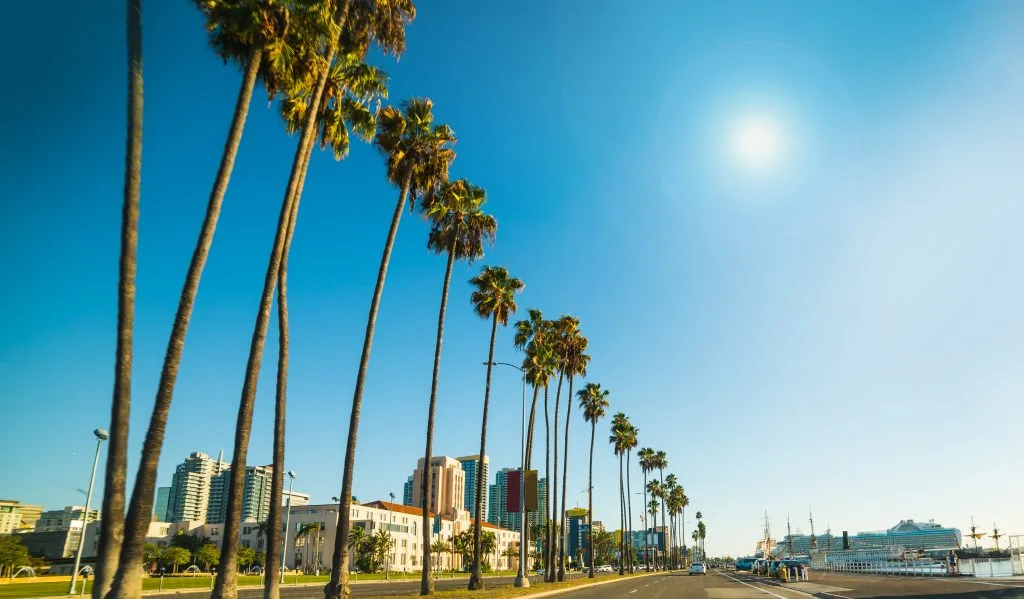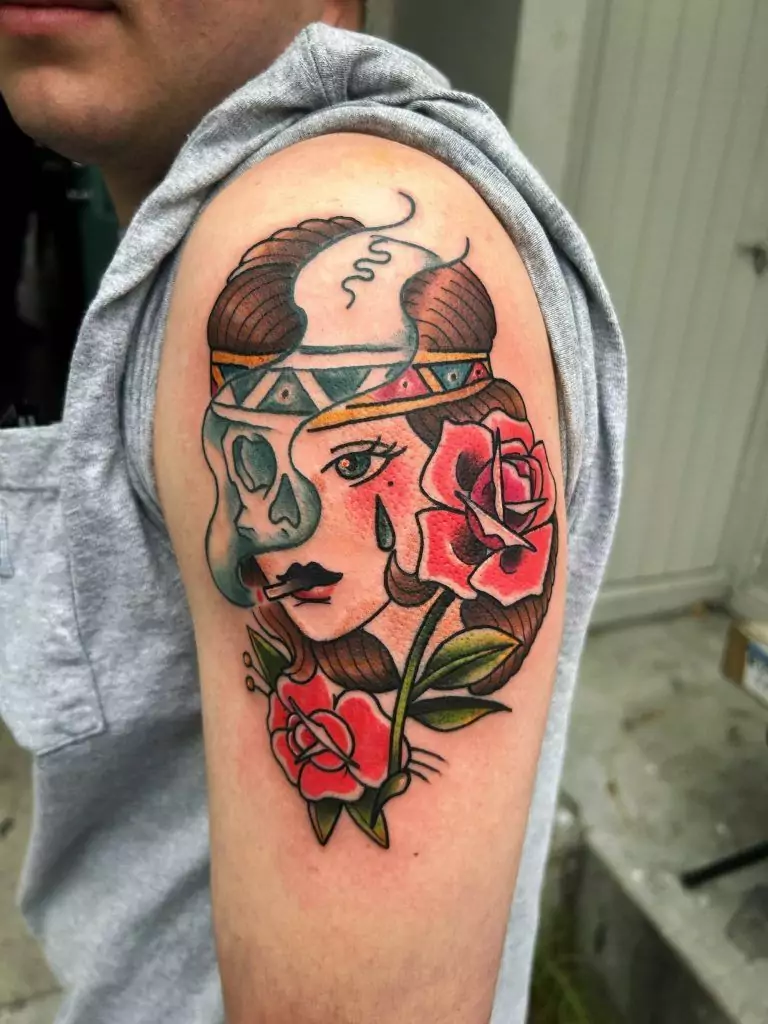The history of tattooing in San Diego can be traced back to the early 20th century, a time when the art form was still largely stigmatized and often associated with sailors and outlaws. Pioneering artists began to emerge, bringing their unique styles and techniques to the city. Among these early tattooists were individuals who had honed their craft in other parts of the country or even overseas, often influenced by the rich tapestry of cultures they encountered.
These artists laid the groundwork for what would become a vibrant tattoo community, characterized by a blend of traditional and innovative styles. One of the most significant influences during this period was the military presence in San Diego. The influx of sailors and Marines provided a steady clientele for tattoo artists, who often set up shop in small, makeshift studios.
These early tattooists not only catered to the aesthetic desires of their customers but also played a crucial role in shaping the local culture. Their work often reflected the stories and experiences of those who wore their ink, creating a deep connection between the artist and the individual. This symbiotic relationship would continue to evolve as tattooing gained popularity and acceptance in the decades that followed.
Key Takeaways
- San Diego’s early tattooing scene was influenced by pioneering artists and their unique styles, shaping the city’s tattoo culture.
- Iconic tattoo shops in San Diego have played a significant role in the rise of the city’s tattoo industry, from the 1970s to the present day.
- Landmark artists in San Diego have made significant contributions to the tattoo industry, leaving behind legacies that continue to inspire new generations of artists.
- The evolution of tattoo styles in San Diego has seen a blend of traditional, Chicano, and contemporary influences, contributing to the city’s diverse tattoo culture.
- San Diego’s tattoo culture is enriched by community events, conventions, and influential figures who have helped shape and promote the local tattoo scene.
The Rise of Iconic Tattoo Shops in San Diego: From the 1970s to Present
The 1970s marked a turning point for tattooing in San Diego, as iconic shops began to emerge, each with its own distinct identity and artistic vision. Funhouse Tattoo, established during this transformative era, quickly became a cornerstone of the local tattoo scene. Known for its commitment to quality and creativity, Funhouse attracted both seasoned tattoo enthusiasts and newcomers alike.
The shop’s reputation for excellence was built on the talents of its artists, who pushed the boundaries of traditional tattooing while embracing new styles and techniques. As the years progressed, other notable shops began to make their mark on the San Diego landscape. Each establishment contributed to a growing sense of community among tattoo artists and clients, fostering an environment where creativity could flourish.
The rise of these iconic shops coincided with a broader cultural shift that saw tattooing move from the fringes of society into the mainstream. This evolution was not just about aesthetics; it represented a growing acceptance of body art as a legitimate form of self-expression and creativity.
Landmark Artists in San Diego Tattoo History: Their Contributions and Legacies
San Diego’s tattoo history is rich with landmark artists whose contributions have left an indelible mark on the industry. These individuals not only mastered their craft but also influenced generations of tattooists who followed in their footsteps. One such artist is the legendary Jack Rudy, known for his pioneering work in fine line and black-and-grey tattooing.
His innovative techniques and dedication to detail set new standards for quality in the industry, earning him respect both locally and internationally. Another influential figure is Freddy Negrete, whose expertise in Chicano-style tattoos has made him a revered name in the tattoo community. Negrete’s work often incorporates elements of Mexican culture, blending traditional motifs with contemporary designs.
His contributions have not only enriched the local scene but have also helped to elevate Chicano tattooing to a recognized art form on a global scale. The legacies of these artists continue to inspire new generations, ensuring that their impact on San Diego’s tattoo culture will be felt for years to come.

The Evolution of Tattoo Styles in San Diego: Traditional, Chicano, and Contemporary


Tattoo styles in San Diego have evolved significantly over the decades, reflecting broader cultural trends and artistic movements. Traditional tattoos, characterized by bold lines and vibrant colors, laid the foundation for many artists in the area. This style often draws inspiration from maritime themes, American folklore, and classic imagery, creating a timeless aesthetic that resonates with many clients.
As artists honed their skills, they began to experiment with different techniques and styles, leading to a diversification of tattoo art in San Diego. Chicano tattooing emerged as a powerful force within the local scene, heavily influenced by Mexican-American culture and identity. This style is known for its intricate designs, often featuring religious iconography, portraits, and cultural symbols.
Artists like Freddy Negrete played a pivotal role in popularizing Chicano tattoos, showcasing their depth and significance beyond mere decoration. In recent years, contemporary styles have also gained traction, incorporating elements from various artistic disciplines such as watercolor painting, realism, and abstract art. This evolution reflects not only the changing tastes of clients but also the growing recognition of tattooing as a legitimate art form.
San Diego Tattoo Culture: Community Events, Conventions, and Influential Figures
The tattoo culture in San Diego is vibrant and dynamic, characterized by a strong sense of community among artists and enthusiasts alike. Various events and conventions throughout the year serve as platforms for showcasing talent and fostering connections within the industry. One notable event is the San Diego Tattoo Convention, which attracts artists from around the world and provides an opportunity for them to share their work with a broader audience.
These gatherings celebrate creativity while also promoting camaraderie among tattooists. Influential figures within the San Diego tattoo scene play a crucial role in shaping its culture. Many artists are not only skilled practitioners but also passionate advocates for the art form.
They often engage with the community through workshops, seminars, and social media platforms, sharing their knowledge and experiences with aspiring tattooists. This spirit of mentorship helps to cultivate new talent while preserving the rich history of tattooing in San Diego.
San Diego’s Influence on the Global Tattoo Scene: International Recognition and Impact
San Diego has emerged as a significant player on the global tattoo stage, with its artists gaining international recognition for their unique styles and innovative techniques. The city’s diverse cultural influences have contributed to a rich tapestry of artistic expression that resonates with audiences far beyond its borders. As artists from San Diego participate in international conventions and exhibitions, they bring their distinctive perspectives to a global audience, further solidifying the city’s reputation as a hub for exceptional tattoo artistry.
The impact of San Diego’s tattoo scene extends beyond individual artists; it has also influenced trends within the broader industry. The city’s commitment to quality craftsmanship and artistic integrity has set benchmarks that many aspiring tattooists strive to achieve. As more people embrace body art as a form of self-expression, San Diego’s contributions continue to shape perceptions of tattooing worldwide, challenging stereotypes and elevating it to an esteemed art form.

Challenges and Triumphs: San Diego’s Tattoo Industry in the Modern Era
While San Diego’s tattoo industry has experienced significant growth and recognition, it has not been without its challenges. Regulatory hurdles and public misconceptions about tattooing can create obstacles for artists seeking to establish themselves professionally. Additionally, as trends shift rapidly within the industry, artists must continually adapt their skills to meet evolving client demands while maintaining their unique artistic voices.
Despite these challenges, many artists in San Diego have triumphed through resilience and innovation. The rise of social media has provided a platform for artists to showcase their work and connect with clients directly, allowing them to build personal brands that transcend geographical boundaries. This digital landscape has also fostered greater collaboration among artists, leading to exciting new projects that push creative boundaries.
As the industry continues to evolve, San Diego remains at the forefront of this dynamic landscape.
Preserving San Diego’s Tattoo History: Museums, Archives, and Oral Histories
As interest in tattoo history grows, efforts to preserve San Diego’s rich legacy are becoming increasingly important. Museums and archives dedicated to documenting the evolution of tattooing provide valuable resources for researchers and enthusiasts alike. These institutions often feature exhibitions that highlight significant artists, styles, and cultural influences that have shaped the local scene over time.
Oral histories play a vital role in preserving personal narratives within the tattoo community. By collecting stories from both artists and clients, these accounts offer insight into the experiences that have defined San Diego’s tattoo culture. Such initiatives not only honor the past but also create a sense of continuity for future generations of tattooists and enthusiasts.
As efforts to document this history continue, they ensure that San Diego’s contributions to the world of tattooing will be remembered and celebrated for years to come.




